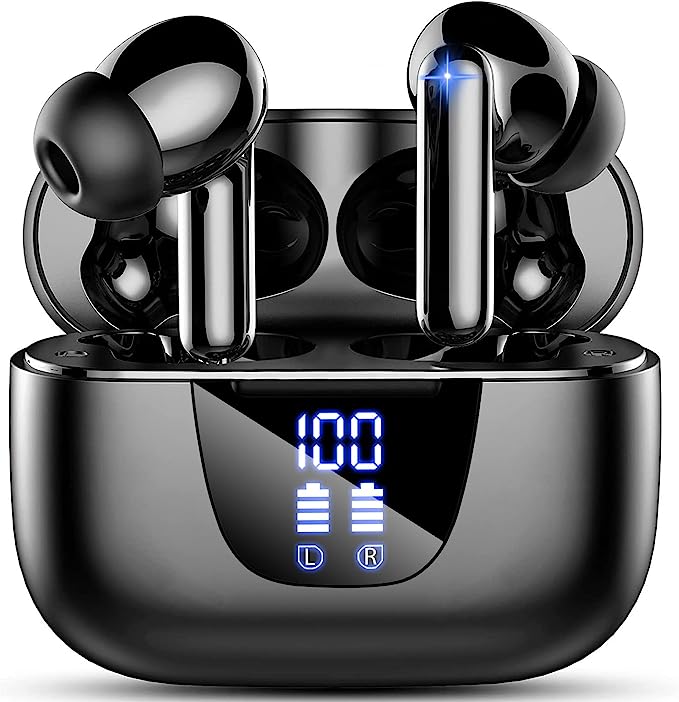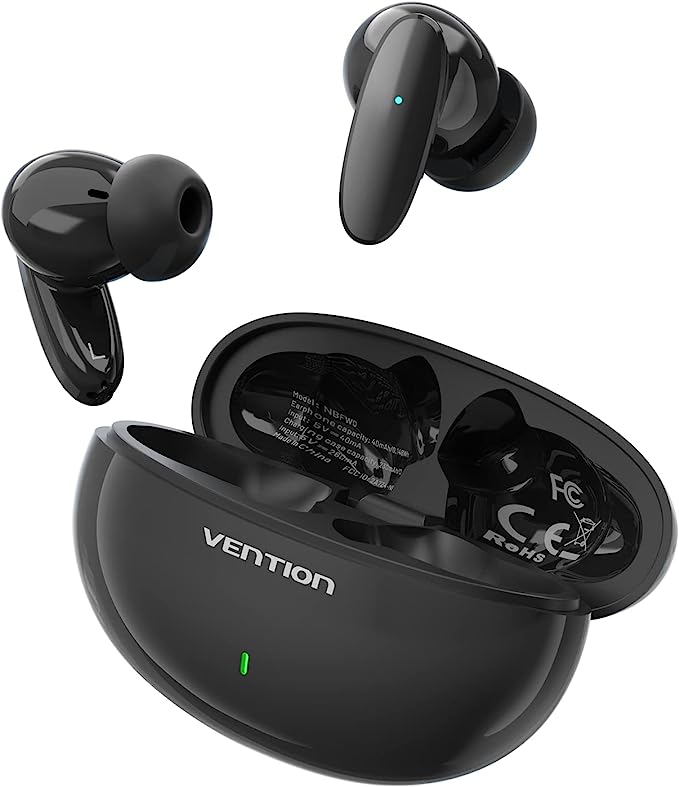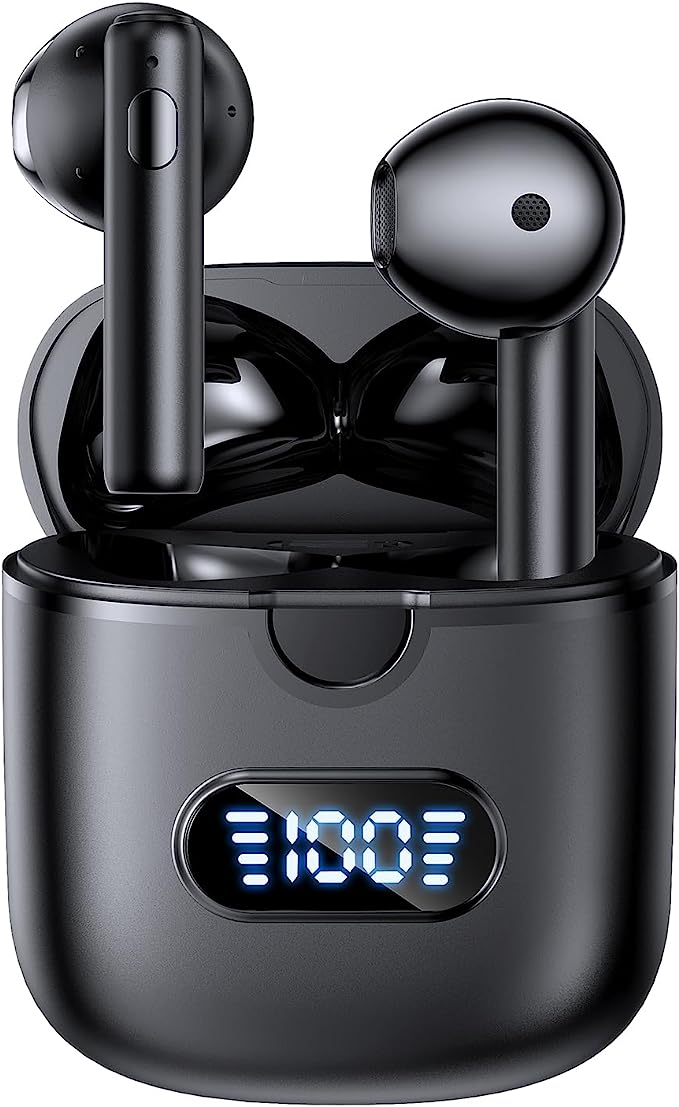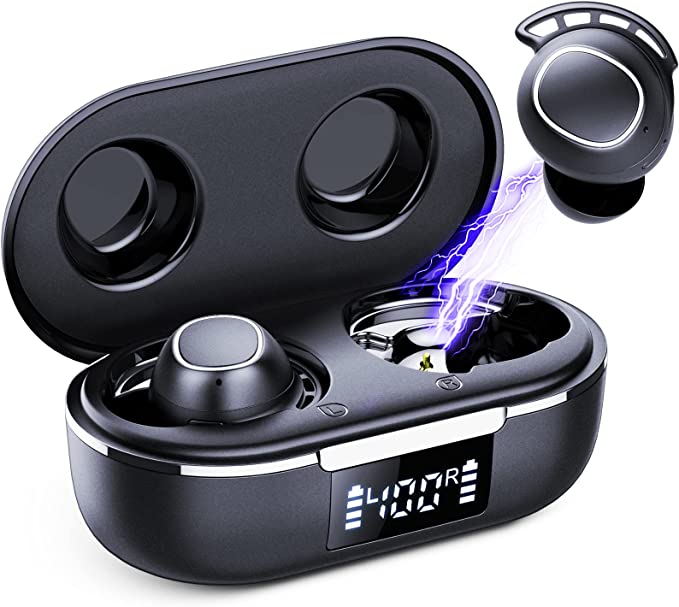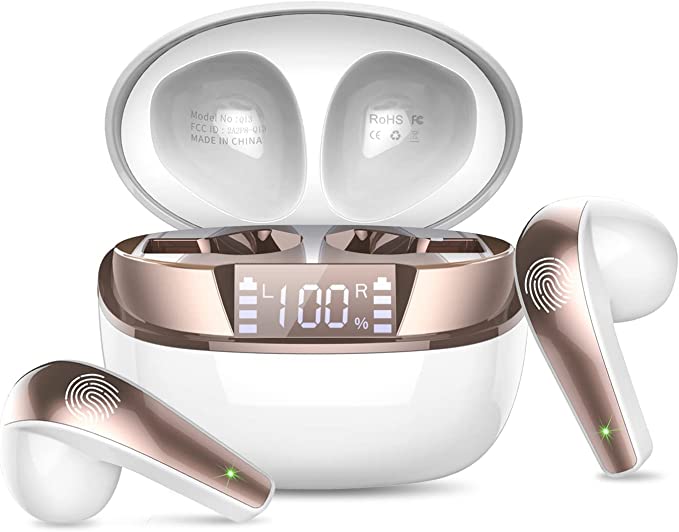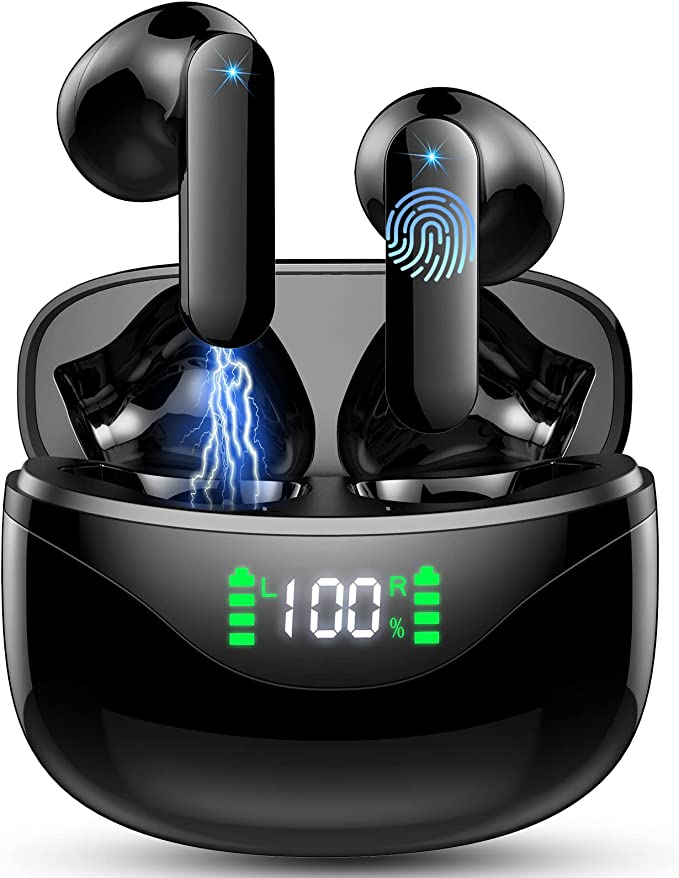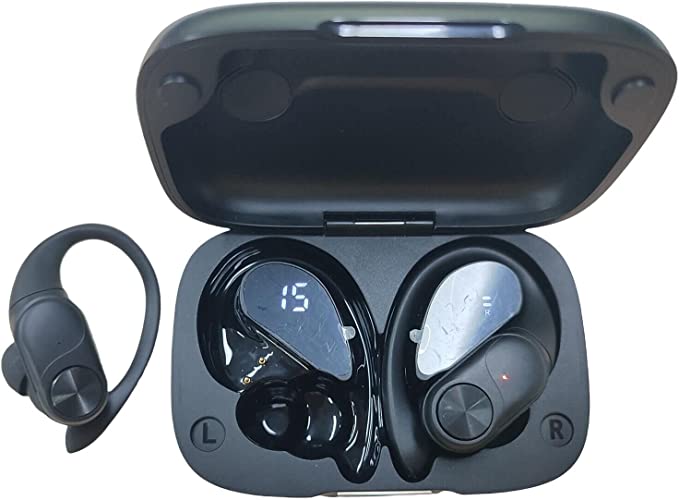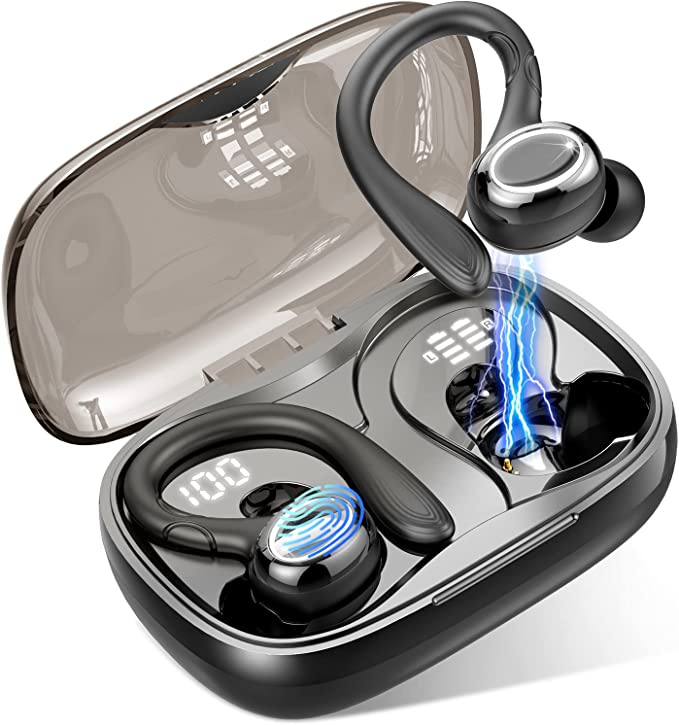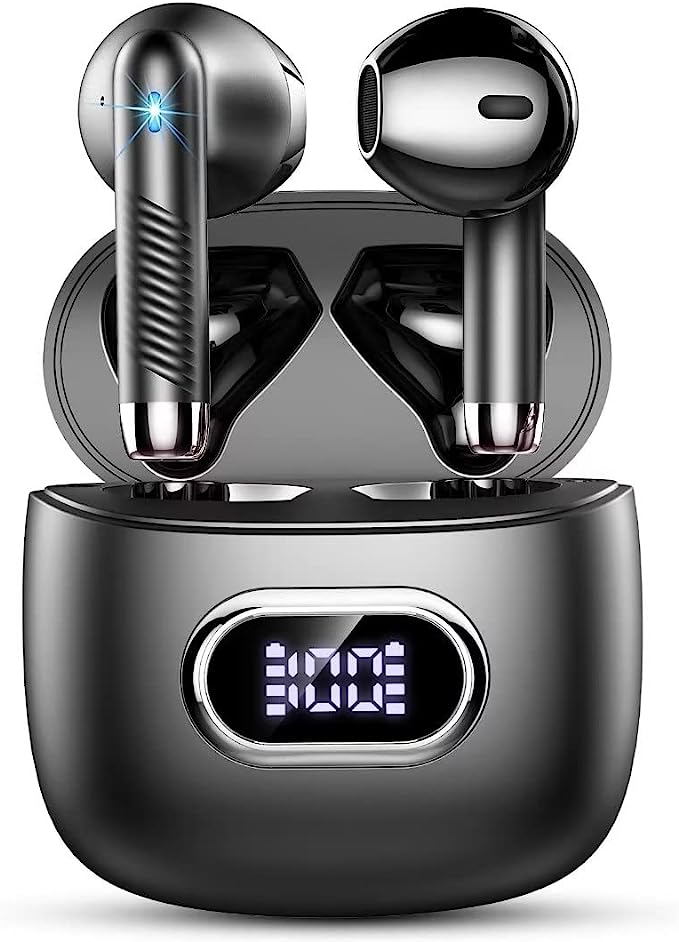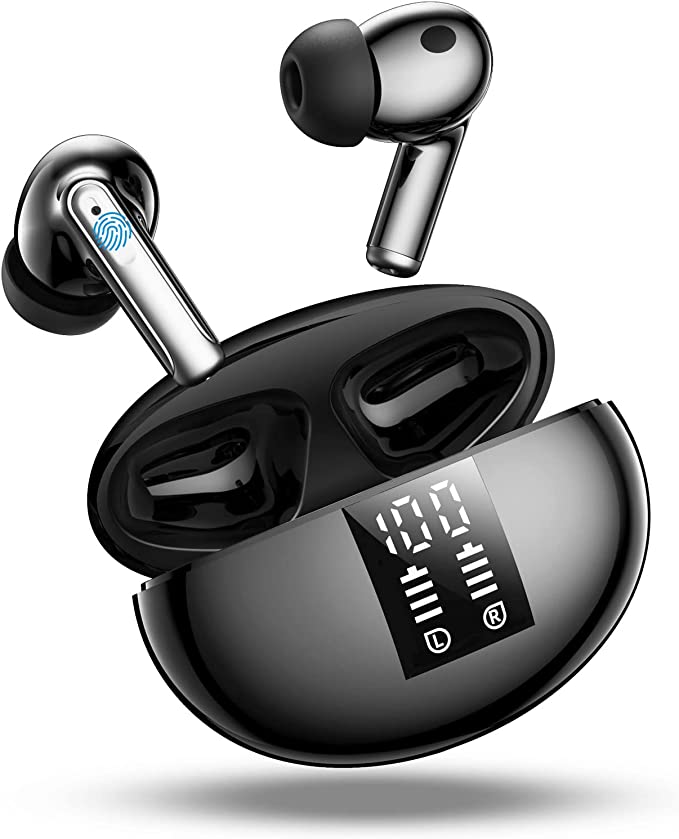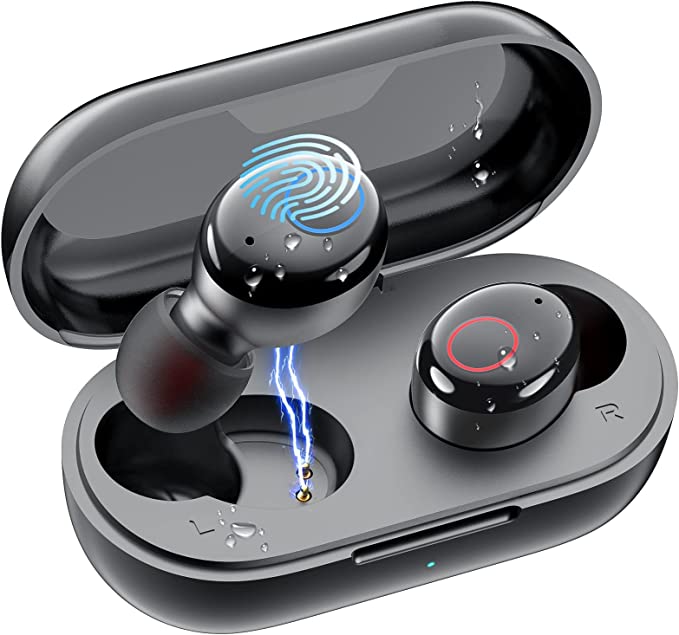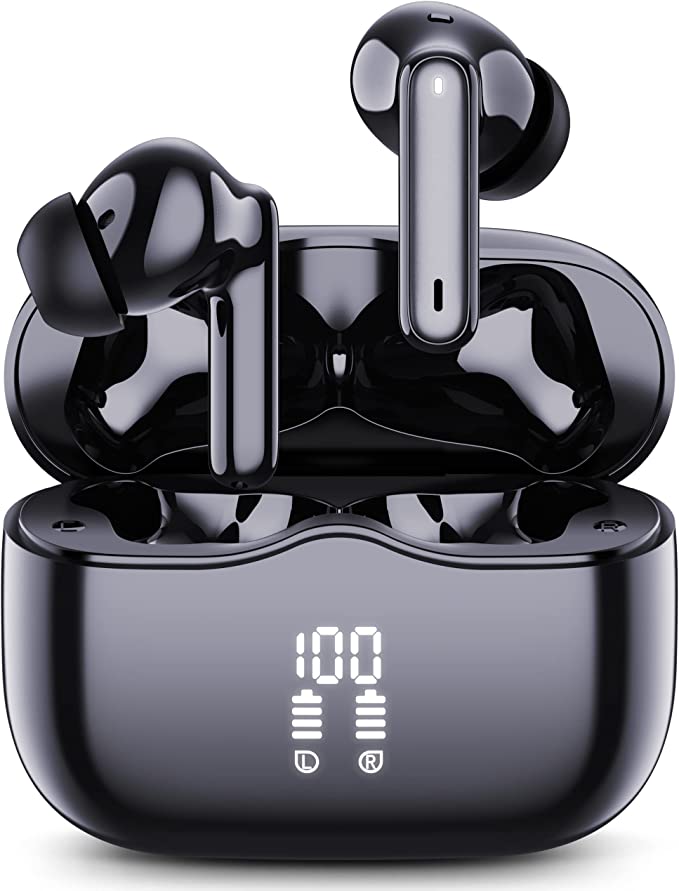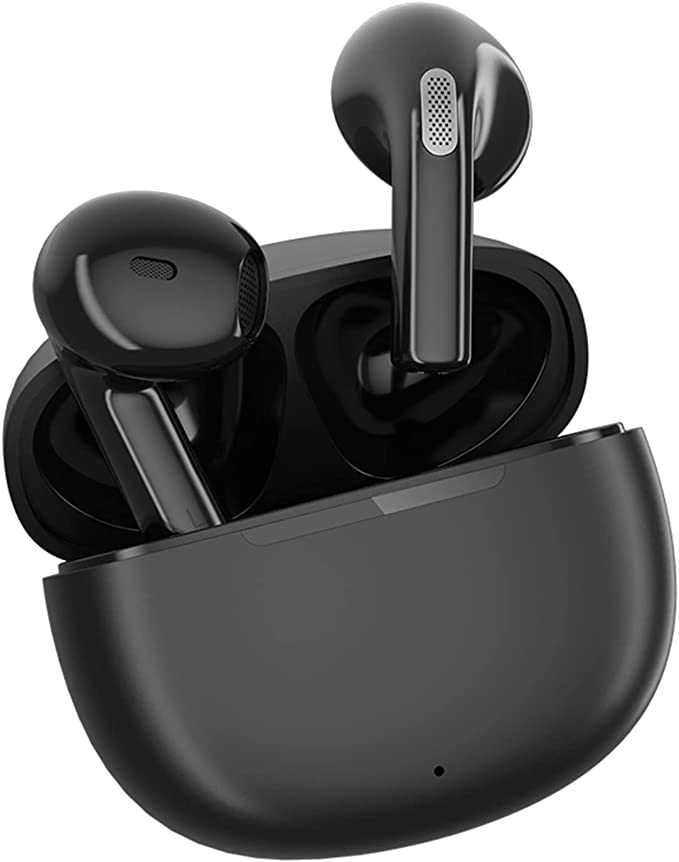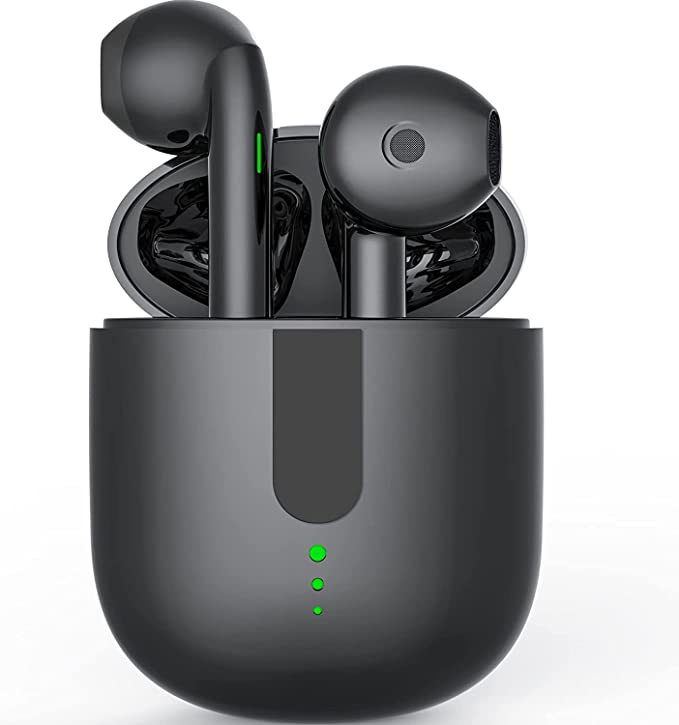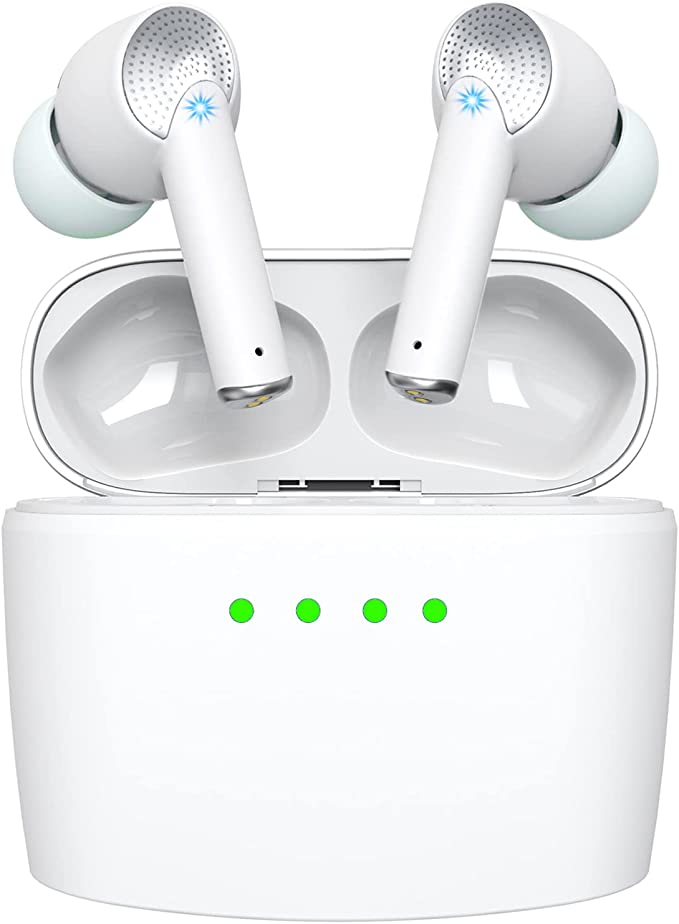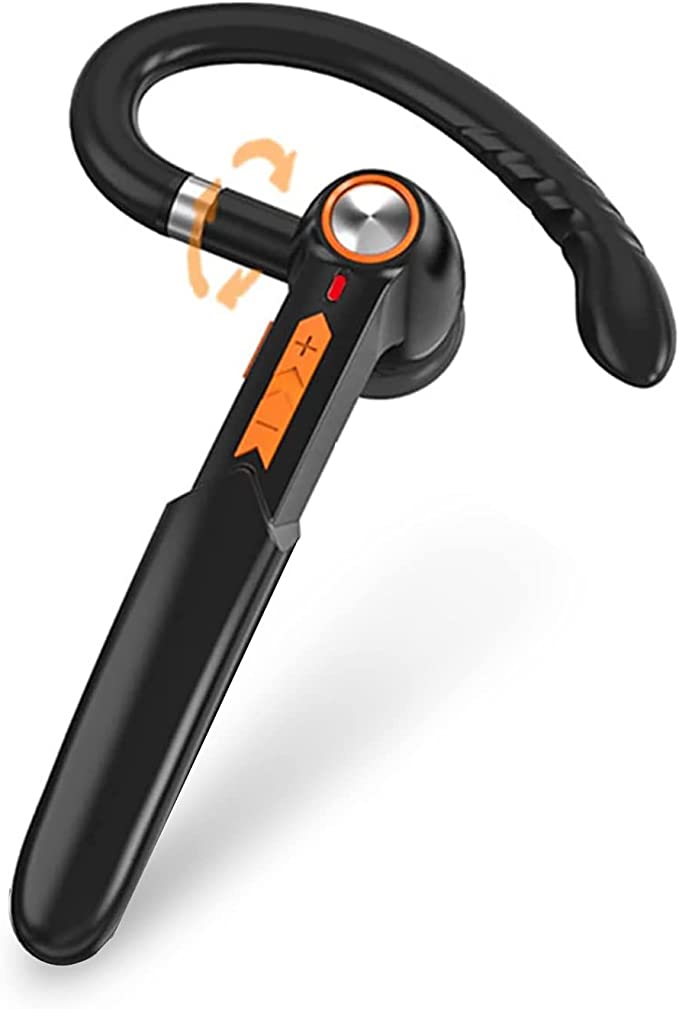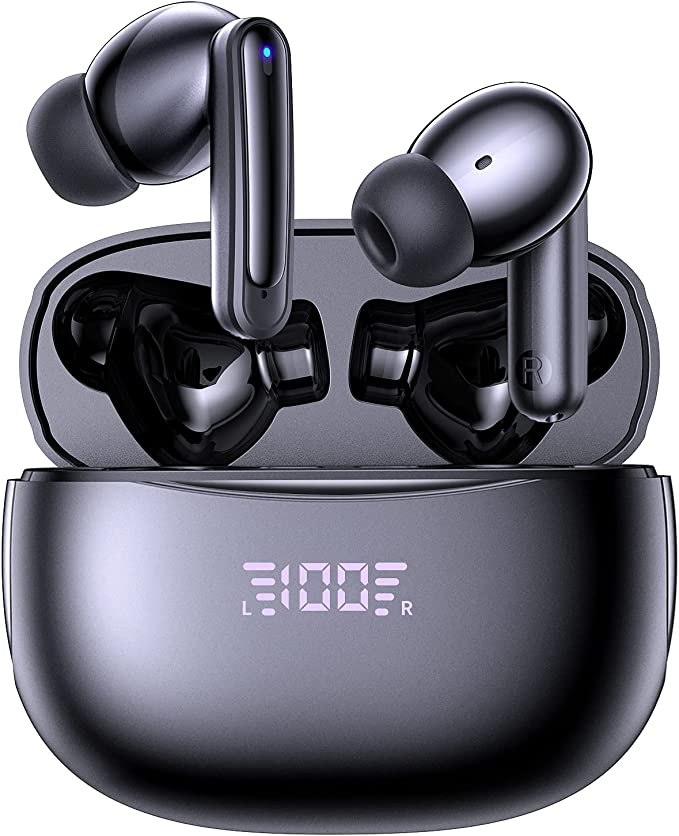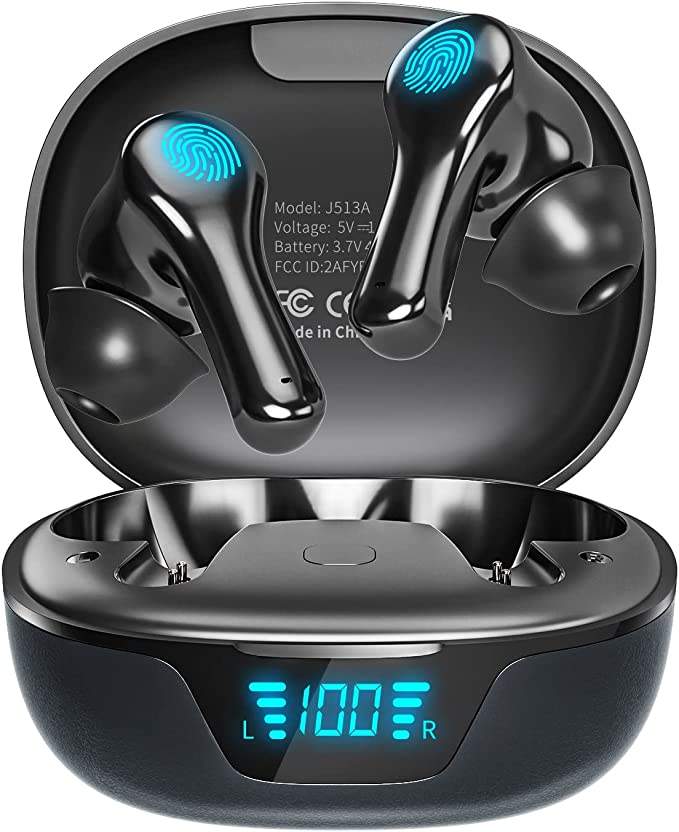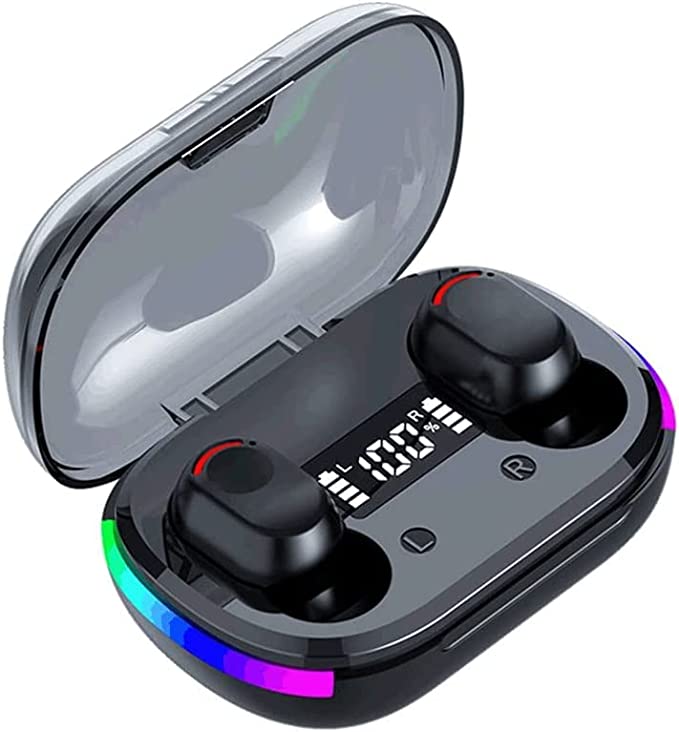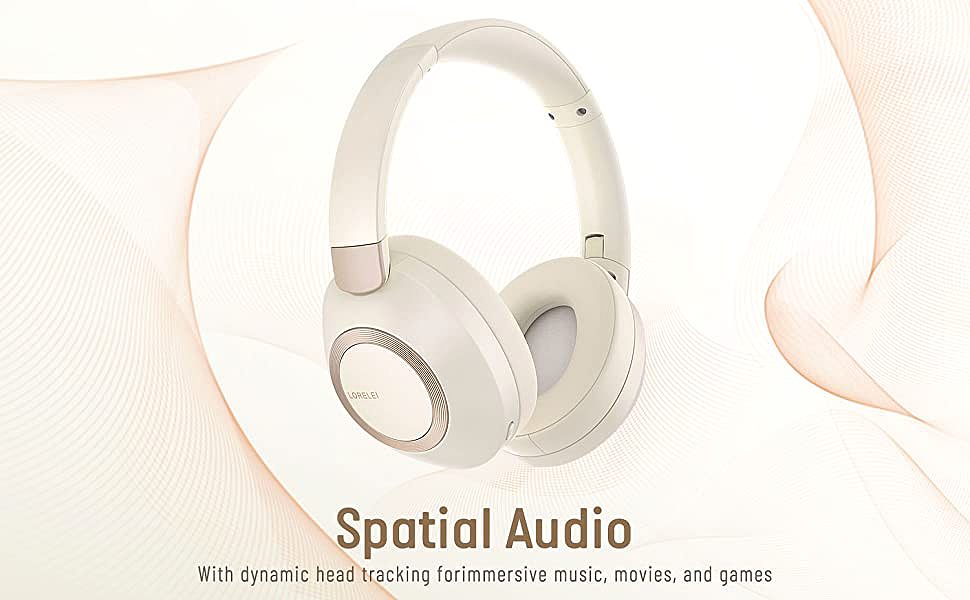TOZO T12 Wireless Earbuds: Outstanding Sound with Strong Battery Life
Update on June 19, 2025, 2:08 p.m.
Ever popped in your wireless earbuds and just… marveled? These tiny titans of tech deliver our daily soundtracks, keep us connected on calls, and accompany us through sweaty workouts, all without a single pesky wire. But have you ever wondered what’s actually going on inside these little marvels? Let’s take the TOZO T12 Wireless Earbuds as our “specimen” today, not to review them, but to figuratively crack them open and explore the fascinating science and engineering that make your untethered audio world possible. Our mission? To peek “under the hood” and understand the “how” and “why” behind their impressive performance.

The Unseen Connection: Decoding Bluetooth 5.3 – Your Wireless Lifeline
First up, the magic that cuts the cord: Bluetooth. The TOZO T12s come equipped with Bluetooth 5.3, one of the more recent iterations of this ubiquitous wireless standard. But what does that actually mean for your ears?
Let’s have a mini-story first. The name “Bluetooth” itself has surprisingly regal roots, named after a 10th-century Danish king, Harald “Bluetooth” Gormsson, famed for uniting Danish tribes. The founders of Bluetooth technology saw it as uniting the “tribes” of communication protocols under one wireless standard. Cool, right?
Now, the science bit, made easy. Imagine countless invisible messengers – radio waves – zipping back and forth between your phone and your T12 earbuds. These messengers carry your music, your calls, everything. Bluetooth 5.3 essentially upgrades their communication skills. They can “talk” faster, more reliably, and are less likely to get their signals crossed with other wireless devices around you. This is partly thanks to a clever trick called “frequency hopping,” where the signal rapidly switches between dozens of channels to find the clearest path, minimizing interference.
For your T12s, Bluetooth 5.3 brings several practical benefits: * The Chorus Line of Protocols (HSP, HFP, A2DP, AVRCP): This isn’t just alphabet soup! These are different “languages” Bluetooth uses for specific tasks. HSP (Headset Profile) and HFP (Hands-Free Profile) ensure your calls are clear and you can use voice commands. A2DP (Advanced Audio Distribution Profile) is the star for music lovers, enabling high-quality stereo audio streaming. And AVRCP (Audio/Video Remote Control Profile) lets you play, pause, and skip tracks directly from your earbuds, without fumbling for your phone. The T12s supporting these means they’re versatile communicators. * The “It Just Works” Feeling: That almost instant pairing when you take the earbuds out of their case? That’s sophisticated digital negotiation, a complex handshake happening in milliseconds, all orchestrated by the Bluetooth chip. * The Unsung Perks of 5.3: While not always shouted from the rooftops, later Bluetooth versions like 5.3 often incorporate improvements in power management. This means the earbuds can sip battery more efficiently, contributing to that impressive “more than 11 hours per charge.” Furthermore, advancements in Bluetooth technology continually aim to reduce latency – that annoying lag you might sometimes notice between video and audio.

The Heartbeat of the Music: Decoding Those 10mm Audio Drivers
If Bluetooth is the messenger, the audio drivers are the vocal cords of your earbuds. The TOZO T12s feature 10mm speaker drivers. So, what’s a driver, and why does its size matter?
Think of a driver as a miniature, high-tech version of a big concert speaker, shrunk down to fit in your ear. The most common type in earbuds like these is a dynamic driver. Here’s the gist: your music, in the form of an electrical audio signal, flows into a tiny voice coil. This coil is attached to a diaphragm – a thin, flexible disc – and sits within a magnetic field created by a small magnet. As the electrical current changes with the music, it makes the voice coil and the attached diaphragm vibrate rapidly. These vibrations push and pull the air, creating pressure waves – and voila, sound waves that your eardrums interpret as your favorite song!
Now, about that 10mm size. Generally, a larger diaphragm has a greater surface area. Why is this often a good thing? A larger surface can move more air with each vibration. This ability to move more air is particularly beneficial for reproducing lower frequencies – the bass notes that give music its depth, warmth, and oomph. TOZO claims the T12s deliver “powerful bass (lowest 14Hz).” For a little perspective, the lowest note on a standard 88-key piano is about 27.5Hz, so 14Hz is venturing into the territory of rumbles you might feel as much as hear!
But it’s not just about the bass. The drivers are tasked with reproducing the entire audible spectrum. The T12s aim for a frequency response from that deep 14Hz all the way up to 20kHz (20,000Hz), which is around the upper limit of typical human hearing, especially for younger listeners. This wide range means they strive to “reappearing every detail of the music vividly,” from the subterranean thump of a bass drum to the delicate shimmer of a cymbal. It’s this capability that led users like “Always Two Tired” to exclaim, “these really do rock. They capture everything they’re supposed to.”

Braving the Elements (or Just the Gym): The IPX8 Waterproofing Shield
Life happens. Sometimes it’s a sweaty gym session, sometimes it’s an unexpected rain shower during your commute. That’s where waterproofing comes in, and the TOZO T12s boast an impressive IPX8 rating.
Let’s crack that code. “IP” stands for Ingress Protection, a standard defined by the International Electrotechnical Commission (specifically IEC 60529). The first digit after IP refers to protection against solid particles (like dust). The “X” in IPX8 means the T12s haven’t been officially rated for dust ingress (though they might still offer some practical resistance). The “8” is the crucial number here, and it signifies a high level of protection against water. Specifically, an IPX8 rating means the device can withstand continuous immersion in water under conditions specified by the manufacturer – in this case, TOZO states “waterproof for 30 minutes at a depth of 1m.”
How do these tiny earbuds achieve such resilience? The secret often lies in an internal nano-coating. Imagine an incredibly thin, invisible shield applied to the delicate electronic components inside. This coating is hydrophobic, meaning it repels water. Think of how water beads up and rolls off a freshly waxed car or a lotus leaf – that’s the “lotus effect” in action, and nano-coatings aim to replicate this at a microscopic level, preventing water from seeping in and causing damage.
This isn’t just about surviving an accidental drop in the sink (though it helps!). It means you can confidently use your T12s during intense workouts where sweat is a given. It means a sudden downpour isn’t a cause for panic. And, as TOZO suggests, “You may clean the base and earbuds as well.” While one user, “Dan,” mentioned plans to test the “shower proof” claim, it’s generally wise to remember that IP ratings are typically for fresh water under specific test conditions. Pressurized water (like a strong shower jet), soaps, shampoos, or saltwater can behave differently and might still pose a risk not covered by the standard IPX8 rating.

The Energizer Earbuds: All-Day Power and Charging Smarts
Great sound and robust connectivity are wonderful, but not if your earbuds die after an hour. This brings us to the unsung heroes: the batteries and charging technology.
The powerhouses packed into these tiny devices are typically Lithium-ion (Li-ion) or Lithium-polymer (Li-Po) batteries. These marvels of chemistry are prized for their high energy density – meaning they can store a lot of energy in a relatively small and lightweight package. This is absolutely crucial for something you wear in your ears! The TOZO T12 earbuds themselves are listed with 50mAh (milliampere-hour) batteries, which, according to TOZO, can deliver “more than 11 hours per charge.” That’s potentially an entire workday of background music or a long-haul flight segment without reaching for the charger.
But the party doesn’t stop there. The included charging case isn’t just a convenient carrying solution; it’s a portable power bank. With its own 500mAh battery, it extends the total playtime “up to 48 hours.” This means you could potentially go for several days, or even a week of moderate use, without needing to find a wall outlet.
When it is time to refuel, the T12s offer modern conveniences: * The USB-C Pit Stop: Need power, fast? The case can be “fully charged in just 1.5 hours with a fast USB-C connection.” USB Type-C is the modern, reversible connector standard that’s increasingly common for its ability to handle higher power delivery for quicker charging. * The Wireless Weave: Prefer to ditch cables altogether? The case also supports wireless charging, taking “under two hours” for a full charge. This likely uses the common Qi (pronounced “chee”) wireless charging standard. It’s a neat bit of physics: an electromagnetic field generated by the charging pad induces an electrical current in a coil inside the T12 case, charging its battery without any physical connection. * The End of Battery Anxiety? The LED Display: A particularly user-friendly feature, as noted by reviewer “Erick,” is the “smart LED digital screen” inside the case. This allows you to “check the battery consumption display at any time,” giving you a clear visual of how much juice is left in both the case and the earbuds as they charge. No more guessing games!
The Perfect Fit & Fingertip Control: Ergonomics and Interaction
All this technology needs to be delivered in a package that’s comfortable to wear and easy to use.
The “curved in-ear design” of the TOZO T12 is a nod to ergonomics – the science of designing things to fit the human body optimally. However, ears are incredibly varied, which is why the inclusion of “6 pairs of Eartips (XS/S/M/L/XL/XXL)” is so critical. Finding the right eartip size does more than just keep the earbuds from falling out. A snug, proper seal is vital for several reasons:
1. Comfort: An ill-fitting eartip can cause discomfort or even pain over time.
2. Sound Quality: It creates a closed acoustic chamber in your ear canal, which is essential for optimal bass response and overall richness of sound. Without a good seal, bass frequencies, in particular, can sound weak and thin.
3. Passive Noise Isolation: A well-fitted eartip physically blocks out some of the ambient noise from your surroundings, allowing you to focus more on your audio without needing to crank up the volume excessively.
For controlling your audio and calls, the T12s utilize touch control sensors. Instead of physical buttons that require you to press them – which can uncomfortably push the earbud further into your ear canal – touch controls respond to light taps or swipes on the earbud’s surface. These likely work using capacitive sensing, similar to your smartphone’s touchscreen. Your fingertip carries a tiny natural electrical charge, and when you touch the sensor, it detects this change in capacitance, registering it as a command. TOZO highlights that this “reduce[s] the pressure on your ears to a great extent.”
Of course, design is often a dance of compromises. Some users, like “Erick,” “Susie,” and “Lauren,” when reviewing the “Large Ergonomic Edition,” commented on the earbuds or case feeling a bit “bulky” or “heavy.” This often reflects a common engineering trade-off: larger audio drivers (for potentially better sound) and bigger batteries (for longer playtime) can necessitate a slightly more substantial physical footprint. The challenge for designers is always to find that “Goldilocks zone” – the perfect balance between performance, features, and unobtrusive comfort.
The Unseen Orchestra: How It All Plays Together
It’s crucial to remember that these technologies don’t operate in isolation. It’s the synergy between them that creates the overall user experience. The power-efficient Bluetooth 5.3 chipset helps those 50mAh batteries last for over 11 hours. The secure and comfortable fit, achieved through ergonomic design and multiple eartip sizes, ensures that the 10mm drivers can deliver their full sonic potential directly to your eardrums. The robust IPX8 waterproofing means you can enjoy that sound in a wider range of environments without undue worry. This integration is where the true engineering artistry lies – transforming a collection of individual components into a cohesive, intuitive, and enjoyable product.
Conclusion: The Everyday Extraordinary, Demystified
Your TOZO T12 wireless earbuds, much like the smartphone in your pocket or the smart speaker in your living room, are little marvels of condensed science and meticulous engineering. Peeking “under the hood,” even just a little, doesn’t just demystify them; it can foster a deeper appreciation for the incredible ingenuity that makes our modern, wireless world sing, connect, and endure.
Technology, when it’s truly well-designed, often strives to feel effortless, almost invisible. But by taking a moment to understand the basics of Bluetooth communication, the mechanics of audio drivers, the resilience offered by waterproofing standards, and the chemistry behind all-day battery life, we become more informed consumers and, perhaps, a little more awestruck by the everyday extraordinary. So, the next time you pop in your T12s, or any wireless earbuds for that matter, take a second to remember the invisible orchestra of technologies working in concert, all to bring you your personal soundtrack to life.
